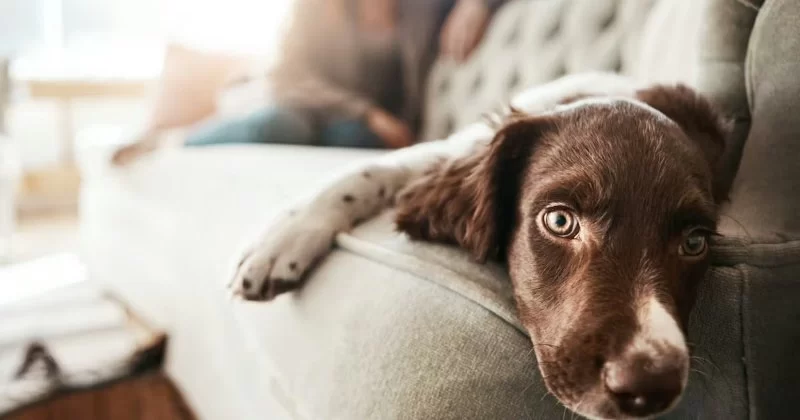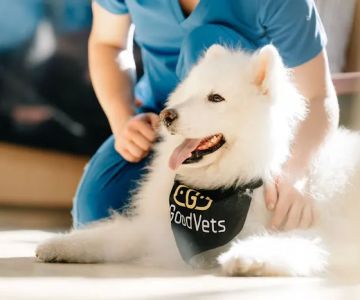How to Handle Pet Anxiety When Leaving for Work
1. Understanding Pet Anxiety: What Happens When You Leave?
Many pet owners have experienced the challenges of leaving their pets behind when heading to work. Whether it’s your dog barking endlessly or your cat hiding in distress, the anxiety pets feel when they are separated from their owners can be tough to witness. Pet anxiety, especially separation anxiety, is a common issue for many pets, and understanding its causes is the first step in addressing the problem.
Separation anxiety occurs when pets become overly attached to their owners and struggle with being left alone. Dogs, for example, might exhibit signs like whining, drooling, or destructive behavior such as chewing furniture or tearing up rugs. Cats may act out by urinating outside their litter box or hiding in a panic. The root cause of this anxiety is often related to a change in routine, lack of socialization, or a traumatic event that has made the pet overly dependent on its human companions.
2. Signs Your Pet Is Experiencing Anxiety
Before you can effectively manage your pet's anxiety, it's important to recognize the signs that indicate they are experiencing distress. Different pets may display different symptoms, but some common indicators of anxiety include:
- Excessive barking or meowing: Loud vocalization can indicate that your pet is upset about being left alone.
- Destructive behavior: Pets may chew furniture, scratch walls, or engage in other destructive actions as a response to their anxiety.
- Pacing or restlessness: Pets may walk around in circles, appear agitated, or try to escape the space they are in.
- Changes in eating or bathroom habits: Some pets may lose their appetite, while others may start having accidents inside the house due to their stress.
- Excessive drooling or panting: These physical signs are common in anxious pets, particularly in dogs.
By recognizing these symptoms early, you can begin to take steps to alleviate your pet’s anxiety before it becomes a long-term issue.
3. Practical Tips to Reduce Pet Anxiety When You Leave for Work
Fortunately, there are several strategies you can use to ease your pet’s anxiety when you’re away at work. Here are some practical and effective methods to help calm your furry friend:
3.1 Create a Safe and Comfortable Space
One of the first steps in reducing anxiety is creating a space where your pet feels safe and secure while you’re away. Consider designating a specific room or area that’s familiar to your pet. This space should have their bed, favorite toys, and water. Dogs and cats tend to feel more at ease when they have a comfortable environment where they can retreat during stressful times.
3.2 Stick to a Routine
Animals thrive on routine, and having a predictable schedule can help ease their anxiety. Try to keep consistent feeding times, walks, and playtime before you leave. When your pet knows what to expect, they are less likely to feel stressed about your departure. You may also want to try giving your pet a special treat or toy right before you leave, associating your absence with something positive.
3.3 Use Calming Products and Supplements
There are a variety of calming products designed to help reduce anxiety in pets. These include:
- Adaptil Diffusers: These products release synthetic calming pheromones that can help reduce stress in dogs.
- Calming Collars: Calming collars infused with natural ingredients such as lavender can provide a soothing effect on your pet.
- CBD Oil for Pets: Some pet owners have found success using CBD products to help calm anxious pets. Always consult with your vet before trying new treatments.
These calming aids are non-invasive options that can be used in conjunction with other strategies to help your pet feel more comfortable when you're gone.
3.4 Consider Pet Cameras or Interactive Toys
Modern technology can help ease both your and your pet’s anxiety. Consider using a pet camera that lets you monitor your pet while you’re away. Some pet cameras even allow you to talk to your pet or dispense treats remotely, helping them feel more connected to you. Additionally, interactive toys that dispense food or treats can keep your pet occupied and distracted during the day.
3.5 Hire a Dog Walker or Pet Sitter
If your pet’s anxiety is particularly severe, consider hiring a dog walker or pet sitter to come by during the day. A midday walk or short visit can break up the day and help reduce stress for your pet. A pet sitter can also provide companionship and reassurance, which is especially helpful for dogs and cats with separation anxiety.
4. Real-Life Story: How One Pet Owner Overcame Separation Anxiety
Meet Sarah, a dog owner whose beloved Labrador, Max, struggled with severe anxiety every time she left for work. Max would bark nonstop and destroy furniture when left alone. After consulting with her vet, Sarah implemented several strategies to ease Max’s anxiety. She started with a consistent routine, feeding Max at the same time each morning and incorporating long walks before leaving. She also placed an Adaptil diffuser in Max’s favorite spot and began leaving him with a puzzle feeder to keep him occupied.
Over time, Sarah noticed a significant improvement in Max’s behavior. He became more relaxed when she left, and the destructive behavior subsided. Max’s anxiety was manageable, and Sarah could leave for work without feeling guilty or worried about her pet’s well-being.
5. When to Consult a Veterinarian
While these strategies can be effective for many pets, sometimes anxiety can be severe or persistent. If your pet’s anxiety continues despite your efforts, it may be time to consult a veterinarian. A vet can rule out any underlying medical conditions and may recommend behavior modification techniques or medication to help manage your pet’s anxiety. Prescription medication, such as anti-anxiety drugs, can sometimes be helpful for pets with severe separation anxiety, but it’s always important to discuss options with a professional first.












